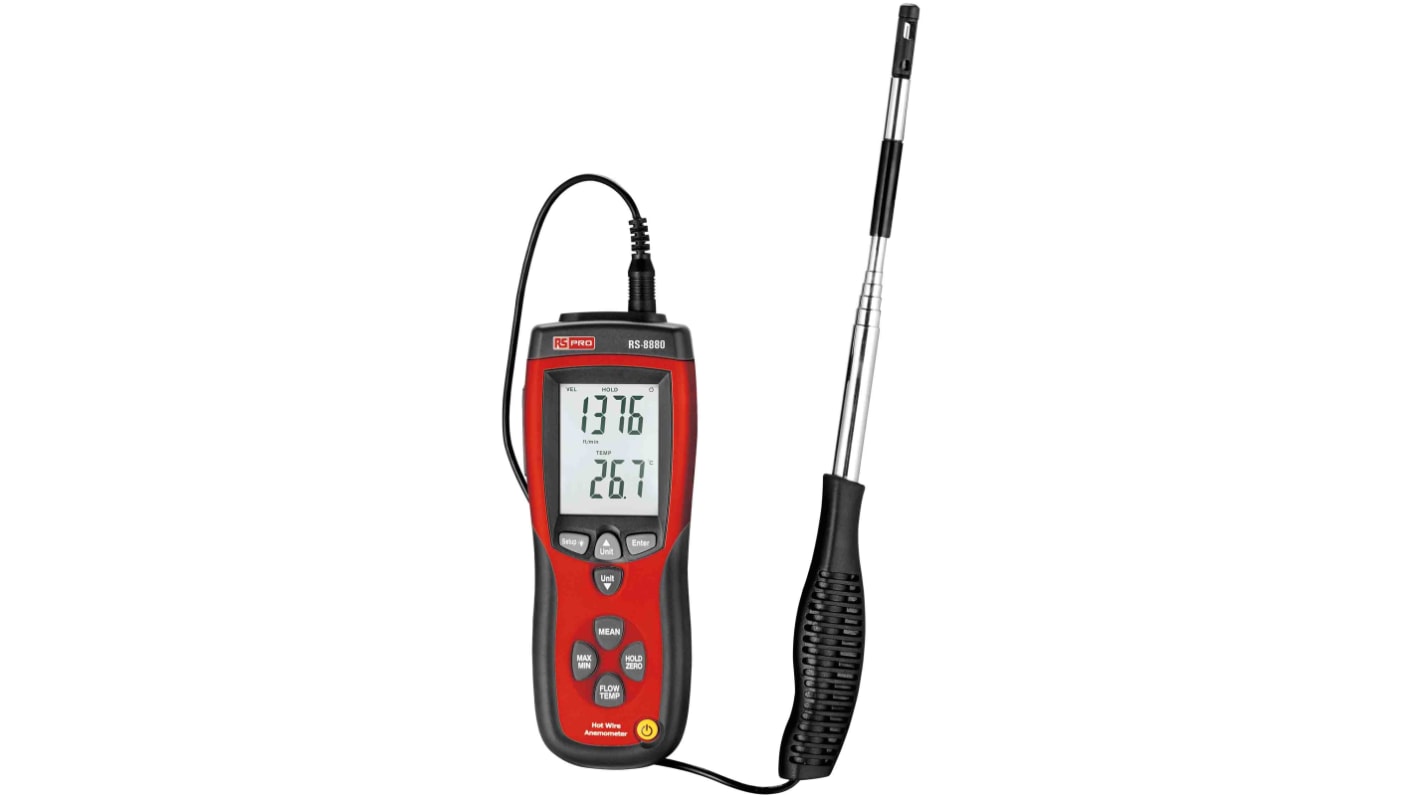How an Anemometer Can Enhance Your Weather Tracking System
How an Anemometer Can Enhance Your Weather Tracking System
Blog Article
All You Need to Find Out About Anemometers: Exactly How They Work, Why They Issue, and Where to Utilize Them
Anemometers, however usually ignored in the realm of clinical tools, play a critical function in numerous fields, supplying beneficial insights right into wind speed and air flow patterns. Understanding the mechanics behind these devices is crucial for any person seeking to harness the power of this information. From meteorologists tracking weather patterns to engineers making frameworks with wind tons in mind, the applications of anemometers are far-reaching and varied. As we look into the ins and outs of anemometer technology, we will uncover the inner operations of these devices, their relevance, and the essential factors to consider when selecting the best anemometer for details applications.

Anemometer Basics
A vital tool used to gauge wind speed and instructions, the anemometer plays an important duty in weather forecasting and numerous markets. An anemometer normally contains three or 4 mugs that turn in the wind, a vane that points into the wind, and sensing units to track the activities or turnings. By determining the rotations or activities over a certain amount of time, the anemometer can determine wind rate. The vane assists determine wind instructions by pointing right into the wind, supplying important data for climate projecting, aviation, maritime procedures, environmental surveillance, and wind energy applications.
There are various sorts of anemometers offered, including mug anemometers, vane anemometers, hot-wire anemometers, and sonic anemometers, each with its special functions and applications. Mug anemometers are frequently made use of for standard wind speed dimensions, while vane anemometers are liked for directional dimensions. Hot-wire anemometers appropriate for reduced airspeeds, and sonic anemometers are optimal for high-precision measurements in research study and commercial settings. Recognizing the basics of anemometers is crucial for accurate wind data collection and evaluation throughout various industries.
Concepts of Anemometer Procedure
Structure on the fundamental understanding of anemometer basics, the principles of anemometer operation elucidate the auto mechanics behind wind speed and direction measurements. Anemometers operate the principle of airflow impacting a sensor, causing it to rotate. Cup anemometers, as an example, have 3 or even more mugs that record the wind, creating them to rotate much faster as the wind rate rises. The turning rate is after that exchanged a wind rate dimension. Vane anemometers, on the various other hand, utilize a tail or a probe that straightens itself with the wind instructions, giving a dimension of wind instructions based on the positioning of the sensor. Hot-wire anemometers count on a heated cord that cools as wind overlooks it, with the price of cooling identifying the wind speed. Ultrasonic anemometers measure wind rate and instructions by assessing the moment it takes for ultrasonic signals to travel in between transducers. Recognizing these concepts is important for accurate and reliable wind measurements in various applications.
Value of Anemometers
Anemometers play a crucial function in determining wind speed and instructions, offering necessary information for weather projecting, climate researches, ecological surveillance, and aviation procedures. Meteorologists rely on anemometers to gather exact wind data, assisting them recognize weather condition patterns, anticipate tornados, and concern timely cautions to the public. Wind ranch operators use anemometers to analyze wind problems and optimize electricity production from wind turbines.
Applications Across Various Industries
Applications of anemometers home cover throughout varied industries, showcasing their adaptability and energy past meteorology. In the renewable resource field, anemometers play a vital role in examining wind problems for wind ranch positionings, making certain optimal energy production. Industries like building and mining make use of anemometers to check wind speeds, vital for safety procedures, especially when working at elevations or in open-pit mines where solid winds can pose dangers. Anemometers are also integral in the aviation sector, aiding pilots in understanding airspeed and wind instructions for risk-free take-offs and touchdowns. The maritime industry advantages from anemometers for ship navigation, helping seafarers expect weather changes and readjust routes as necessary. In agriculture, anemometers assist farmers in handling crop spraying by providing real-time information on wind rate to avoid drift. Furthermore, anemometers locate applications in cooling and heating systems to optimize air flow and improve power effectiveness in buildings. The diverse usage cases of anemometers emphasize their importance across various industries, highlighting their essential role in boosting operational safety and security and effectiveness (anemometer).

Choosing the Right Anemometer for Your Demands
Choosing the ideal anemometer customized to your details needs is vital for obtaining accurate wind rate and instructions dimensions. When selecting an anemometer, think about variables such as the intended application, called for dimension variety, environmental conditions, and wanted functions. For basic purposes, a cup anemometer is suitable for gauging wind speed, while a vane anemometer provides wind instructions information. Hot-wire anemometers are ideal for low airspeed dimensions, and ultrasonic anemometers supply high precision and longevity.

Verdict
In final thought, anemometers play an essential duty in measuring wind rate and instructions across different markets. It is vital to consider the relevance of anemometers in order to make enlightened decisions when selecting the most ideal device for determining wind problems.
There are numerous kinds of anemometers available, including cup anemometers, vane anemometers, hot-wire anemometers, and sonic anemometers, each with its special attributes and applications. Mug anemometers are commonly utilized for fundamental wind rate dimensions, while vane anemometers are favored for directional dimensions. Hot-wire anemometers are suitable for low airspeeds, and sonic anemometers are suitable for high-precision dimensions in research and industrial settings.Building on the foundational understanding of anemometer fundamentals, the concepts of anemometer procedure illuminate the technicians behind wind my review here speed and direction dimensions. For basic objectives, a cup anemometer is appropriate for measuring wind read the article speed, while a vane anemometer provides wind direction information.
Report this page